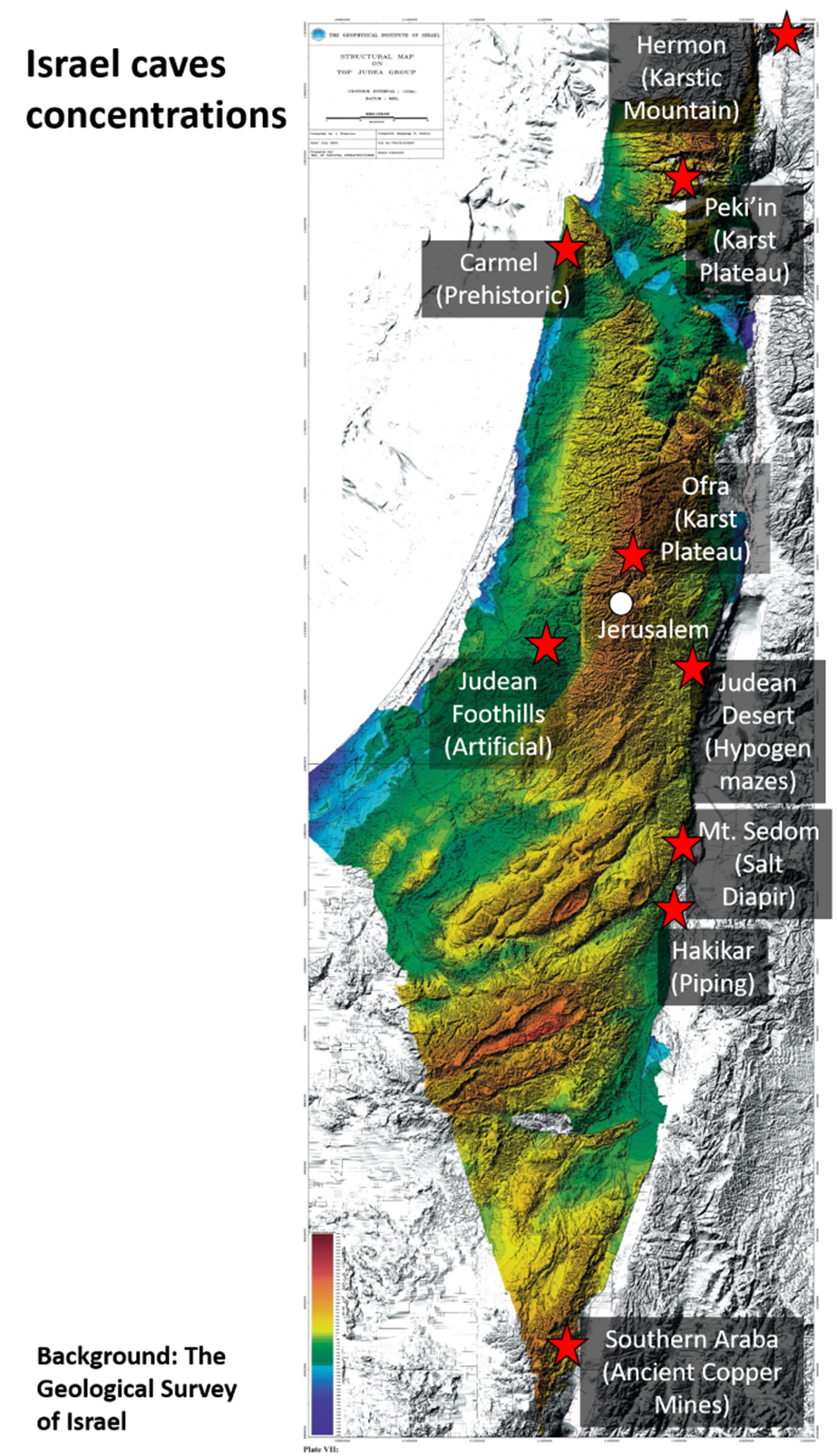In Israele, la maggior parte delle aree collinari è di interesse speleologico, con molte tipologie di rocce che favoriscono la formazione di grotte naturali e artificiali. Il paese mostra un gradiente di carsismo e di grotte che va dall’intenso carsismo del Libano nel nord al carsismo minore nella regione di Eilat, nel deserto del Negev meridionale.
Le principali regioni carsiche e grotte di Israele includono Hermon e Golan, Galillee, Mount Carmel, Shomron, Giudea, Giudea – deserti del Negev, e Mount Sedom. Ogni regione ha le sue caratteristiche uniche in termini di tipo di grotte e habitat cavernicoli.
Israele è anche ricco di cavità artificiali, create dall’uomo come parte dell’infrastruttura economica e fisica di città e villaggi. Queste cavità sono state create durante l’antichità e sono state utilizzate per vari scopi, tra cui cisterne, cave di roccia, frantoi, stalle, colombari, magazzini e granai.
Le organizzazioni speleologiche nazionali in Israele includono l’Israel Cave Research Centre (ICRC), con circa 100 speleologi e 3 gruppi e organizzazioni speleologiche. La principale pubblicazione speleologica è “Niqrot Zurim”.
La biospeleologia in Israele è caratterizzata da una notevole varietà di grotte e habitat cavernicoli, ognuno con un insieme unico di specie. La fauna delle grotte riflette la storia evolutiva che ha avuto luogo nelle vicinanze epigee delle grotte. La posizione geografica di Israele, che funge da ponte intercontinentale, ospita fauna di diverse regioni continentali e biogeografiche.
Esistono due gruppi principali di specie cavernicole: le “specie cavernicole relitte di origine paleartica”, che rappresentano una fauna relitta settentrionale e temperata, e le “specie di relitti desertici o tropicali”, che rappresentano la fauna saharo-araba o afro-tropicale.
Il sistema di grotte di Ayyalon è un esempio unico che combina il carsismo ipogenico con una fauna sotterranea endemica. Questo sistema utilizza una rete alimentare chemiosintetica basata sull’H2S all’interno dei pennacchi ascendenti di acqua idrotermale.
In termini di protezione legale, in Israele non esiste una “legge sulla conservazione delle grotte”. Tuttavia, le grotte sono protette da leggi indirette come la “Dichiarazione dei valori naturali protetti”, che si riferisce anche a stalagmiti e stalattiti e protegge tutte le 32 specie di pipistrelli che vivono in Israele. Questo significa che cacciare, raccogliere o danneggiare i pipistrelli, così come danneggiare i loro habitat naturali (grotte), è considerato illegale.
Coordinatori: Boaz Langford1,2 boazlangford@gmail.com, Amos Frumkin1,2 amos.frumkin@mail.huji.ac.il
Collaboratori: Shlomi Aharon, Boaz Zissu
1Istituto di Scienze della Terra, Università Ebraica di Gerusalemme, Israele
2Centro di ricerca sulle grotte in Israele




